South Africa has three capital cities, each serving a different purpose:
- Pretoria: This is the administrative capital, where the executive branch of government is located.
- Cape Town: This is the legislative capital where the Parliament is based.
- Bloemfontein is the judicial capital housing the Supreme Court of Appeal.
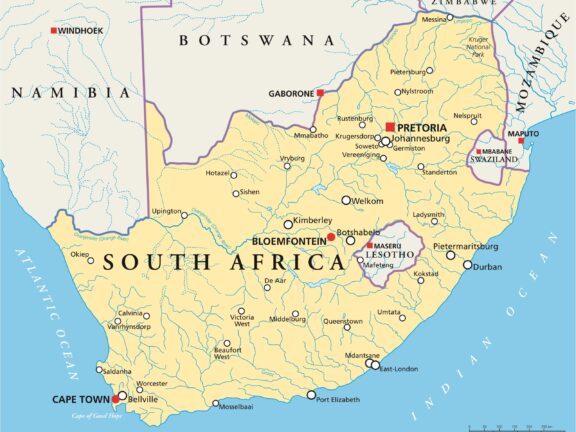
Perhaps the most important capital of South Africa is Pretoria. Pretoria is known as the “Jacaranda City” because of the thousands of jacaranda trees that line its streets and fill the city with purple blossoms every spring. It is a city of government institutions, foreign embassies, and historical buildings.
Where are South Africa’s Capitals located?
These three cities, each with its distinct character and geographical setting, play pivotal roles in the functioning and identity of South Africa.
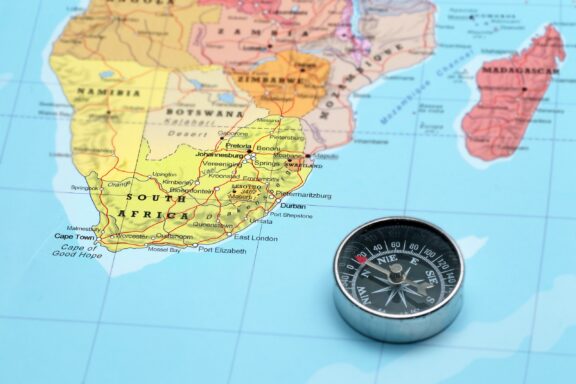
- Pretoria (Administrative Capital): Situated in the northern part of the Gauteng Province in South Africa. It lies approximately 55 kilometers north-northeast of Johannesburg, its more significant and economically linked neighbor.
- Cape Town (Legislative Capital): Located at the southwestern tip of South Africa, it sits on the Cape Peninsula, extending into the Atlantic Ocean. The city is renowned for its dramatic natural setting, surrounded by the Atlantic and Indian Oceans.
- Bloemfontein (Judicial Capital): Located in the central part of South Africa, in the Free State Province, it’s roughly equidistant from major cities like Cape Town in the south, Johannesburg in the north, and Durban in the east. The city is positioned on the southern edge of the Highveld, a vast plateau in the interior of South Africa.
History of the Capitals of South Africa
Each capital city in South Africa bears significance in its foundational history and plays a major role in shaping modern-day South Africa through political, economic, and cultural evolutions.
Pretoria
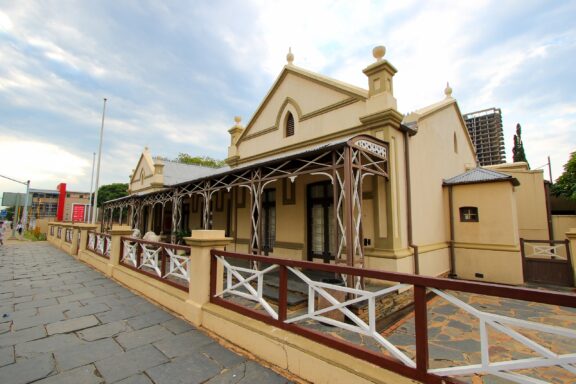
Before the founding of Pretoria, the region was inhabited by various indigenous groups, including the Ndebele and Tswana. They established kingdoms and settlements, engaging in trade, cattle herding, and farming.
Established by Marthinus Pretorius in 1855, Pretoria was named in honor of his father, Andries Pretorius. The city quickly became a center for the Boers (descendants of Dutch settlers). By the late 19th century, it had become a significant urban center in the South African Republic.
During the Anglo-Boer Wars, Pretoria was occupied by British forces in 1900. Following the war’s end, it became the administrative capital of the newly formed Union of South Africa in 1910. Throughout the apartheid era, the city served as a central administrative hub, reflecting the policies of segregation and, later, the movements against them.
With the end of apartheid, Pretoria transitioned into the modern era as the executive capital of a democratic South Africa. Today, it serves as an important urban center with significant governmental functions.
Cape Town
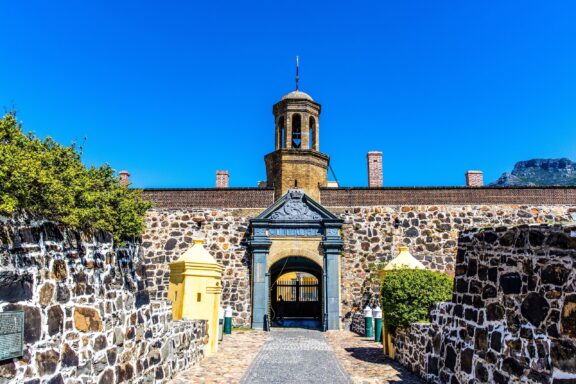
Before European arrival, the region around Cape Town was inhabited by the Khoikhoi and San people. These hunter-gatherer and pastoralist communities had established a way of life suited to the region’s unique environment.
Jan van Riebeeck set up a refreshment outpost for the Dutch East India Company in 1652, marking the beginnings of Cape Town. The settlement expanded as Dutch settlers arrived, and slaves from East Africa, Madagascar, and the Far East were brought in, making it a diverse hub from its early days.
The British seized the Cape from the Dutch in the late 18th century and officially acquired it in the early 19th century. Under British rule, Cape Town expanded and developed further, becoming an essential port in the British Empire.
Cape Town was chosen as the legislative capital of the Union of South Africa in 1910. During the apartheid era, the city became a focal point of resistance, with Robben Island becoming a symbol of the anti-apartheid movement.
Since the end of apartheid, Cape Town has transformed into a global city known for its culture, natural beauty, and history. It remains a crucial economic and cultural hub in South Africa.
Bloemfontein
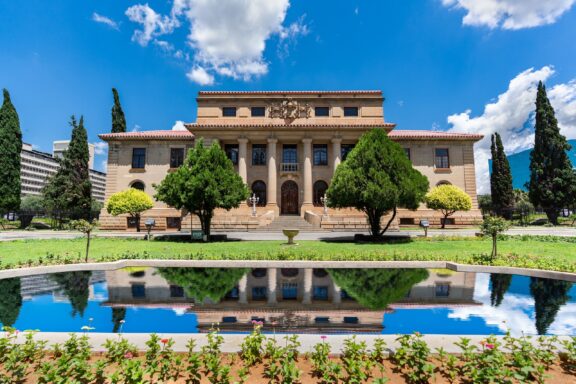
The region around Bloemfontein was inhabited by various indigenous groups, particularly the Sotho-Tswana, who established settlements and engaged in agriculture and trade.
Founded as a British military outpost by Major Henry Douglas Warden in 1846, Bloemfontein grew in importance among the Boer population. By the late 19th century, it became the capital of the Orange Free State Republic.
Bloemfontein’s role in the Boer Wars solidified its importance. After the wars, it was designated the judicial capital of the Union of South Africa in 1910. Throughout the 20th century, the city grew in size and importance, with its courts playing key roles in many legal battles, including those against apartheid legislation.
Post-apartheid, Bloemfontein has continued its role as the country’s judicial heart. It’s also become a cultural and academic center, housing institutions like the University of the Free State.
Features of the Capitals of South Africa
Each capital embodies a unique facet of South Africa’s identity, reflecting its historical roots and modern aspirations.
Pretoria
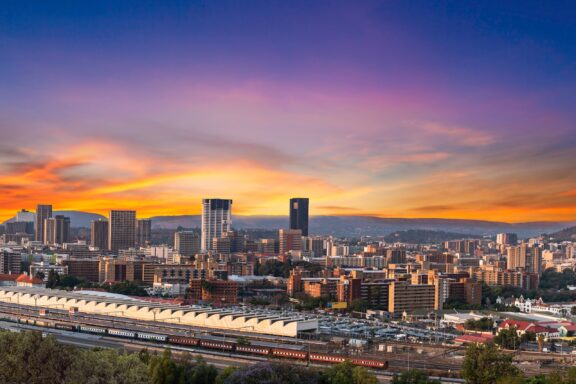
Pretoria is a city of grand government buildings, particularly the Union Buildings, which command a panoramic view from Meintjieskop Hill. As an epicenter of diplomacy, it hosts numerous foreign embassies and provides a vibrant mix of South African history, culture, and architecture.
- Geography and Climate: Pretoria is in a transitional zone between the Highveld plateau and the Bushveld. The climate is temperate, with wet summers and dry winters. Summers often experience afternoon thunderstorms, while winters bring mild temperatures during the day and cooler conditions at night.
- Population: Pretoria has an estimated population of over 2.7 million people. The city is culturally diverse, reflecting the broader ethnic makeup of South Africa, including Black Africans, Whites, Coloureds, and Indians. There’s also a significant expatriate population due to the presence of embassies and international organizations.
- Economy: Pretoria is an administrative and diplomatic hub, so many residents are employed in government services. The automotive industry is also significant, with several major car manufacturers operating plants in the city. Additionally, Pretoria is an educational center home to institutions like the University of Pretoria and the Council for Scientific and Industrial Research (CSIR).
Cape Town
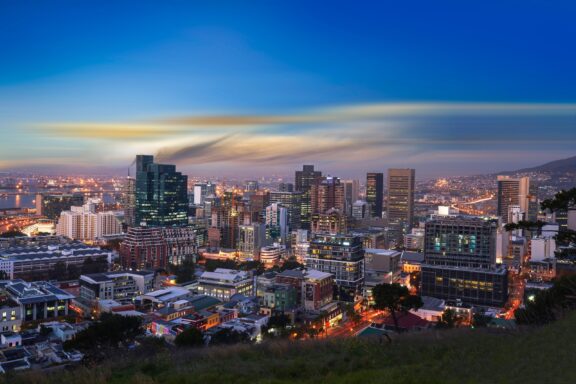
Cape Town’s rich tapestry of cultures is reflected in its landmarks, from the historic Castle of Good Hope and colorful Bo-Kaap quarter to the modern V&A Waterfront. Robben Island, where Nelson Mandela was imprisoned for much of his 27-year incarceration, lies nearby and is an evocative reminder of the country’s turbulent past.
- Geography and Climate: Cape Town enjoys a Mediterranean climate with wet, mild winters and hot, dry summers. The city is bordered by the Atlantic and Indian Oceans and shadowed by the Table Mountain range, strongly influencing its microclimates.
- Population: Cape Town has a population of over 4.7 million people. The demographics include a mix of Black Africans, Whites, Coloureds, and Asians. The city’s history as a port and a hub for various cultures has resulted in a rich cultural diversity.
- Economy: Cape Town’s economy is diverse and robust. It’s a major tourist destination, so tourism is a significant contributor: the V&A Waterfront and other areas house tech start-ups, financial services, and creative industries. The city is also a significant port, influencing trade and manufacturing sectors.
Bloemfontein
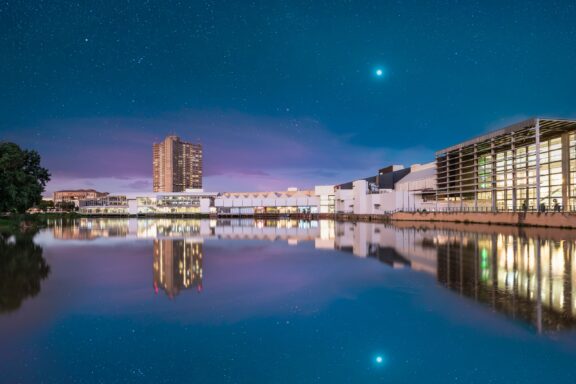
Also known as “City of Roses,” features a tranquil ambiance contrasts, and Bloemfontein offers a harmonious blend of historical and modern architecture, including the Fourth Raadsaal and the Appeal Court. The city is also known for its cultural importance, with institutions like the National Museum and the University of the Free State enhancing its academic and artistic prestige.
- Geography and Climate: Bloemfontein is situated on the southern edge of the Highveld at an altitude of about 1,395 meters. Its climate is semi-arid, characterized by warm summers and cool winters, with occasional snowfall in the surrounding high-ground areas.
- Population: Bloemfontein’s population is over 570,000. It’s a predominantly Black African city, but there are also White, Coloured, and Indian communities. The city’s academic institutions attract a diverse student population.
- Economy: While Bloemfontein houses the country’s highest courts, its economy is based on more than just the judiciary. The city is an important commercial center with agriculture-related industries due to its position in the heart of a farming region. Education and healthcare are other significant sectors, with the University of the Free State and the Central University of Technology providing employment and driving economic activities.
Things to Do and Places to See in the Capitals of South Africa
Each capital offers unique attractions that encapsulate the history, beauty, and diverse cultures while offering visitors a well-rounded experience.
Pretoria
1. Union Buildings
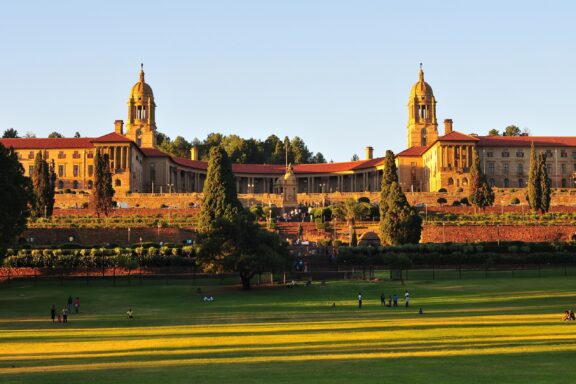
The Union Buildings in Pretoria hold historical and architectural significance for the country. The design reflects the English monumental style and indigenous South African influences. The buildings are divided into two wings, joining at the center with a semi-circular amphitheater.
The Union Buildings have been the setting for many historical events in South African history. The structure was built to commemorate the union of the former British colonies of the Cape Colony and Natal with the former Boer republics of the Transvaal and the Orange Free State.
2. Voortrekker Monument
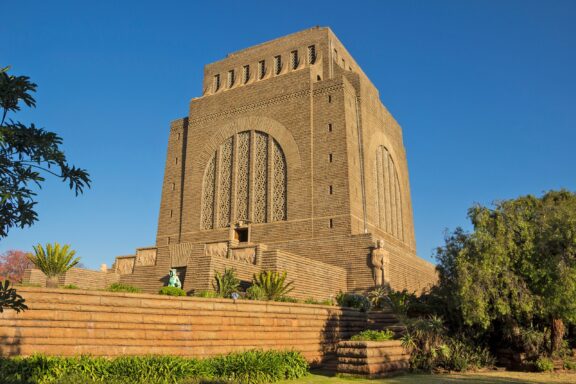
The Voortrekker Monument is a massive granite structure built to honor the Voortrekkers (Pioneers) who left the Cape Colony between 1835 and 1854 to venture into the country’s interior. This Great Trek was undertaken by descendants of the original Dutch settlers in the Cape, who felt increasingly dissatisfied with British rule.
The monument and its significance have been a point of controversy in post-apartheid South Africa, reflecting the complex and often painful history of the country. However, efforts have been made to reframe its significance in a broader South African context.
3. National Zoological Gardens
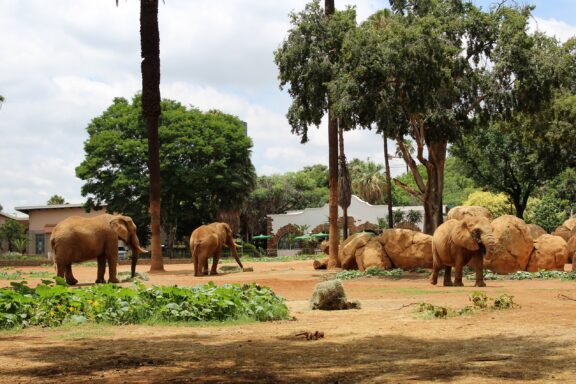
The National Zoological Gardens is a popular destination for locals and tourists. The zoo was founded in 1899 and has grown significantly over the years. It spans over 85 hectares (about 210 acres) and is home to thousands of animals.
The zoo houses many mammals, birds, reptiles, and fish. It has both exotic animals from other continents and native South African species. It plays an active role in conservation and animal welfare. It’s involved in breeding programs for endangered species and has contributed significantly to wildlife biology and zoology research.
4. Freedom Park
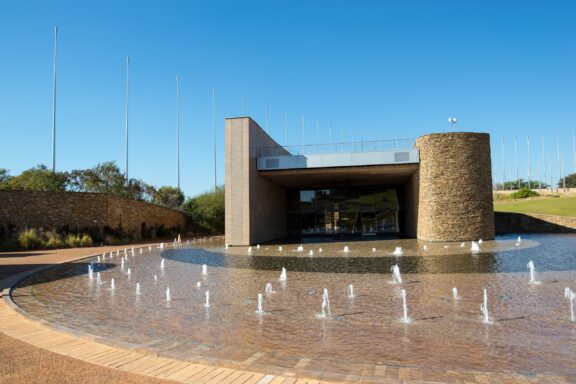
Freedom Park is a significant post-apartheid monument symbolizing the nation’s long journey toward freedom and unity. It is more than just a park or a tourist attraction; it encapsulates the South African nation’s soul, history, and aspiration.
Freedom Park was conceived as a memorial to honor those who sacrificed their lives for a free and democratic South Africa. It serves as a beacon of hope for the future while remembering the past.
5. Pretoria Botanical Gardens
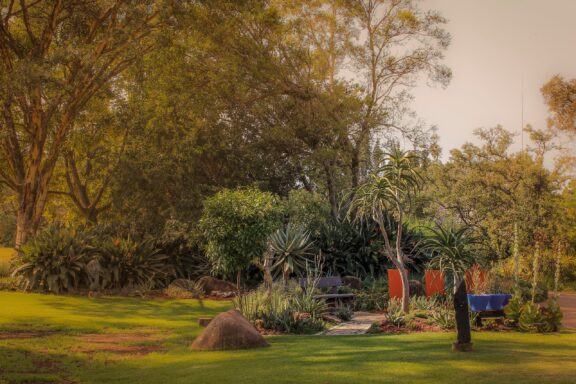
The Pretoria National Botanical Garden, often referred to simply as Pretoria Botanical Gardens, is one of South Africa’s nine National Botanical Gardens. Situated in the eastern suburb of Brummeria in the city of Pretoria, it holds significance both as a conservation site and as a place of beauty and relaxation for visitors.
The garden spans approximately 76 hectares and was established in 1946. It formally opened to the public in 1984. It primarily focuses on indigenous plants, mostly South African species. It provides a unique opportunity to view plants in a relatively small area.
Cape Town
1. Two Oceans Aquarium
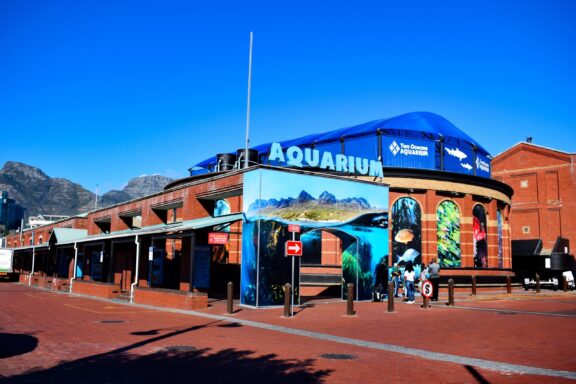
The Two Oceans Aquarium is one of the city’s most popular attractions. It offers visitors a close-up look at the rich marine life surrounding the Cape, where the Indian and Atlantic Oceans meet.
The aquarium showcases various marine habitats, including both offshore and coastal environments. Highlights include:
- Predator Exhibit: Home to large predatory fish, including ragged-tooth sharks.
- I&J Ocean Exhibit: A magnificent, multi-level exhibit that offers views of turtles, rays, and various fishes.
- Kelp Forest Exhibit: A serene underwater forest showcasing the unique kelp ecosystem native to the Cape Coast.
- Penguin Exhibit: A popular exhibit featuring African penguins.
2. V&A Waterfront
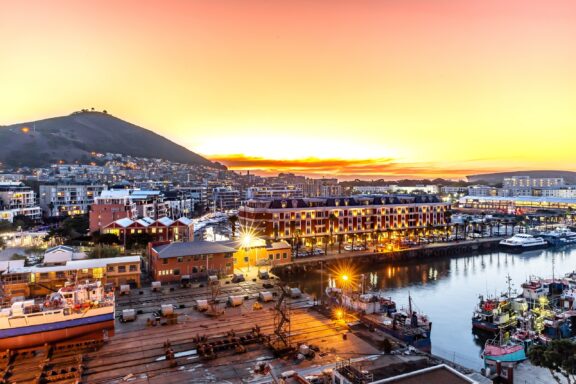
The V&A Waterfront is one of the city’s most popular and visited destinations. It is located in the city’s historic harbor, offering a combination of shopping, dining, entertainment, and historical sites, all set against the backdrop of the iconic Table Mountain and the Atlantic Ocean.
A blend of historical and modern, the V&A Waterfront offers something for everyone, whether interested in shopping, dining, exploring maritime history, or simply soaking in the stunning views of Cape Town’s natural beauty.
3. Kirstenbosch National Botanical Garden
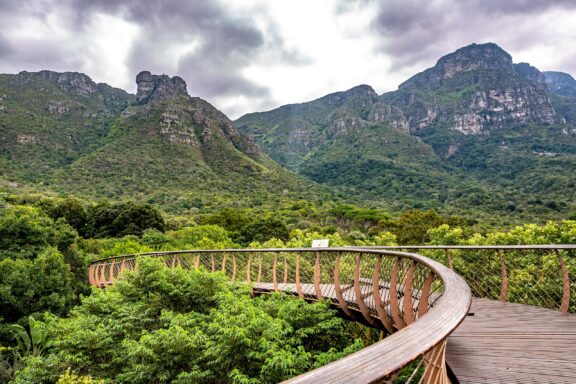
Kirstenbosch National Botanical Garden, nestled at the eastern foot of Table Mountain, is one of the most beautiful botanical gardens in the world and holds significant scientific importance. Established in 1913, it’s dedicated to preserving and displaying the diverse flora of southern Africa.
Kirstenbosch focuses predominantly on indigenous plants, and it was the first botanical garden in the world with this ethos. It displays a wide range of the diverse plant life of Cape Flora, as well as plants from all the diverse regions of southern Africa.
4. Boulders Beach
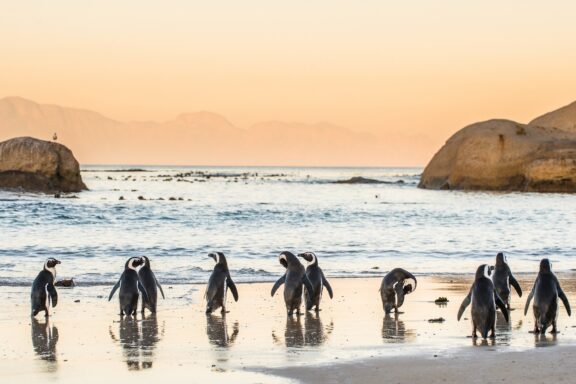
Boulders Beach, located near Simon’s Town in Cape Town, is renowned for its colony of African penguins and the distinctive large granite boulders from which the beach takes its name.
Boulders Beach is one of the few places in the world where visitors can get up close to African penguins, also known as Jackass penguins, due to their distinctive braying call. Established in 1982, the colony at Boulders Beach has grown significantly, providing a unique opportunity for people to observe these birds in their natural habitat.
5. Bo-Kaap
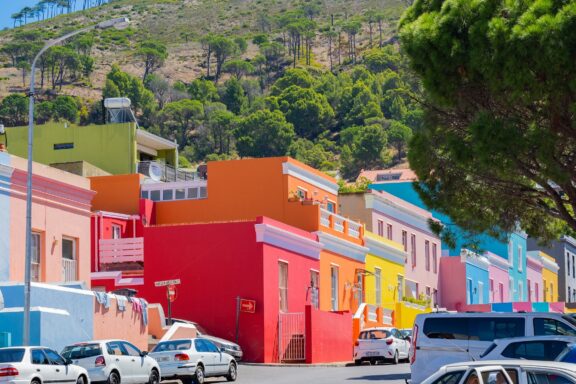
Bo-Kaap, formerly known as the Malay Quarter, is one of Cape Town’s most vibrant and historically significant neighborhoods. Located on the slopes of Signal Hill, with the city center below and Table Mountain as its backdrop, Bo-Kaap is known for its brightly colored homes, cobbled streets, and rich history that dates back to the 16th and 17th centuries.
Bo-Kaap has a strong Muslim influence, having been the traditional home of Cape Town’s Muslim community, many of whom are descendants of slaves from Indonesia, India, and other parts of Africa during the Dutch colonial period.
Bloemfontein
1. Naval Hill
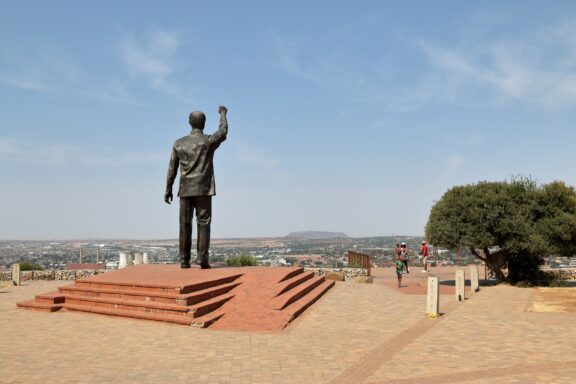
Naval Hill is a prominent hill in Bloemfontein. It offers a panoramic view of the city and is attractive for its natural beauty and historical significance.
Naval Hill is home to the Franklin Game Reserve, the only urban game reserve in South Africa. This reserve houses various species, including zebra, giraffe, buffalo, and antelope. The idea of watching wildlife against the backdrop of a city skyline makes it a unique experience.
Visiting Naval Hill uniquely blends natural, historical, and cultural experiences. Whether you’re keen on watching the wildlife, learning about the stars, or just wanting to take in the views of Bloemfontein, Naval Hill has something for everyone.
2. Free State National Botanical Garden
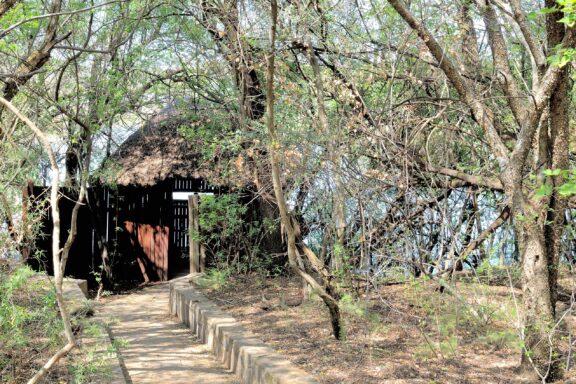
The Free State National Botanical Garden is a key attraction and conservation area in the Free State province of South Africa. It spans around 70 hectares and showcases the region’s unique plant life.
The garden conserves and showcases over 400 species of plants native to the Free State and plants from the Northern Cape and Lesotho. A significant part of the garden is naturally dominated by wild olive and Karee trees. This allows visitors to experience the region’s flora in an authentic environment.
3. Fourth Raadsaal
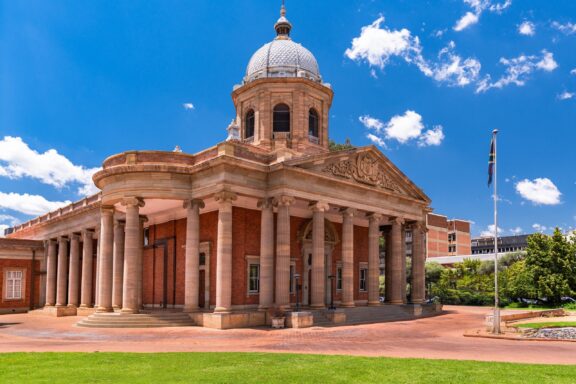
The Fourth Raadsaal is an important historical building located in Bloemfontein. The Raadsaal, which translates to “Council Hall” in English, has served as a significant center for governance and administration.
The architect John Edwin Harrison designed the building, and was officially opened in 1893. It was constructed when the Orange Free State was an independent Boer republic before it became a British colony and eventually part of the Union of South Africa.
4. Oliewenhuis Art Museum
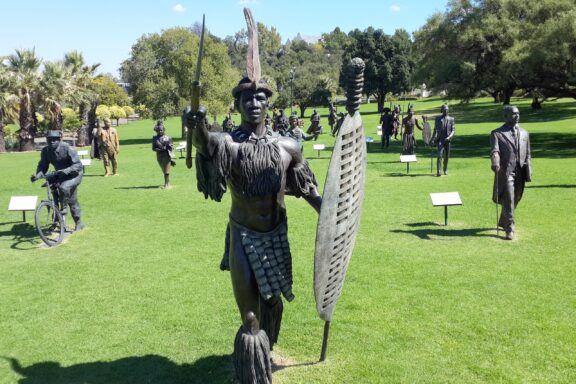
Oliewenhuis Art Museum is a premier art museum. Originally a residence, it was later transformed into a museum dedicated to collecting, conserving, and exhibiting South Africa’s artistic heritage.
The building was designed by William Mollison, Head Architect of the Department of Public Works, and his assistant, John Stockwing Cleland, in 1935. It was used as a residence for the Governor General of the Union of South Africa and later for State Presidents.
The museum houses an impressive collection of South African art, ranging from historical to contemporary pieces. This includes works by renowned South African artists, representing a broad spectrum of the nation’s artistic heritage.
5. War Museum of the Boer Republics Bloemfontein
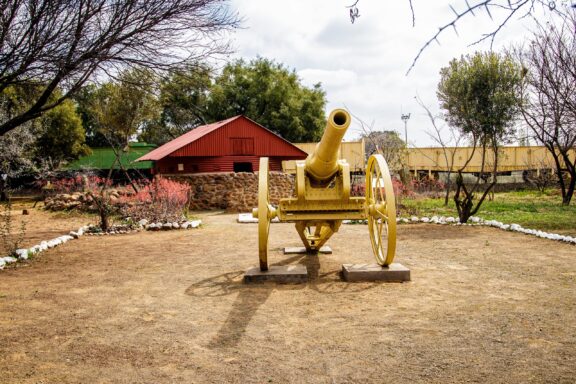
The War Museum of the Boer Republics in Bloemfontein is dedicated to preserving and presenting the history of the Boer War, also known as the Second Anglo-Boer War (1899-1902). It provides a nuanced understanding of a critical period in South African history. For those interested in the history of colonialism, warfare, and South Africa’s path to nationhood, it offers invaluable insights.
The museum boasts a wide array of exhibits, including:
- Photographs from the period.
- Artifacts such as weapons, uniforms, and personal items from soldiers and civilians.
- Art pieces that depict various events and experiences during the war.
- Diaries and personal accounts provide firsthand perspectives of the conflict.
Frequently Asked Questions
What is the best time to visit South Africa?
Pretoria: The best time to visit Pretoria is during the spring and autumn (September to November and March to May) when the weather is pleasant and the city’s gardens fully bloom.
Cape Town: The best time to visit Cape Town is during the summer (December to February) for warm weather and outdoor activities. However, Cape Town has something to offer year-round.
Bloemfontein: Due to its semi-arid climate, the optimal time to explore Bloemfontein is during the Spring (September to November), when the vibrant roses bloom.
Is it safe to visit South Africa?
As of writing this, it’s strongly advisable not to travel to South Africa due to high crime rates, ongoing strikes, and power outages that last several hours.
Are there any cultural events in Pretoria?
Pretoria hosts various cultural events, music festivals, and exhibitions annually. Check the local event calendar for updates.
How do I get around Cape Town?
Cape Town has a reliable public transport system, including buses and a MyCiTi rapid transit system. Taxis, Uber, and renting a car are also popular options.
Final Thoughts
Exploring the South African capitals of Pretoria, Cape Town, and Bloemfontein is a journey through history, culture, and breathtaking landscapes. Each city offers a unique blend of experiences, from Pretoria’s governmental significance and historical landmarks to Cape Town’s iconic landscapes, vibrant arts scene, and Bloemfontein’s serene atmosphere and cultural attractions.
Whether you’re captivated by the Union Buildings in Pretoria, enchanted by the beauty of Table Mountain in Cape Town, or drawn to the “City of Roses” in Bloemfontein, a visit to these capitals is undoubtedly worth it for anyone seeking to delve into South Africa’s rich heritage and diverse charm.
Image Sources and Copyright Information
- Map of South Africa Highlighting Major Cities: © Peter Hermes Furian/Shutterstock
- Compass on South Africa Map: © MattiaATH/Shutterstock
- Historic House Museum Facade: © Alexandre.ROSA/Shutterstock
- Castle of Good Hope Entrance: © Jan Willem van Hofwegen/Shutterstock
- Supreme Court Building with Reflecting Pool: © Arnold.Petersen/Shutterstock
- Pretoria Skyline at Sunset: © Arnold.Petersen/Shutterstock
- Dusk Over Cape Town Skyline: © Arnold.Petersen/Shutterstock
- Twilight Reflections at Loch Logan Waterfront: © Arnold.Petersen/Shutterstock
- Sunset View of the Union Buildings in Pretoria: © Felix Lipov/Shutterstock
- Voortrekker Monument in Sunlight: © Denis Kabanov/Shutterstock
- Elephants at Pretoria Zoo: © Vladimira Pufflerova/Shutterstock
- Monument with Fountains at Freedom Park: © Jurie Maree/Shutterstock
- Tranquil Garden at Dusk: © Nomads Nature Photography/Shutterstock
- Exterior View of Two Oceans Aquarium Building: © CarlyZel/Shutterstock
- Sunset at V&A Waterfront with Mountain View: © Finn stock/Shutterstock
- Wooden Walkway in Kirstenbosch Botanical Gardens with Mountain View: © Finn stock/Shutterstock
- Penguins on Boulders Beach at Sunset: © Sergey Uryadnikov/Shutterstock
- Colorful Houses in Bo-Kaap, Cape Town: © Claudia Harms-Warlies/Shutterstock
- Statue Overlooking City from Hilltop: © Wesley Lazarus/Shutterstock
- Pathway Leading to a Rustic Wooden Hut in a Botanical Garden: © Grobler du Preez/Shutterstock
- Classical Architecture Building with Dome under Blue Sky: © Arnold.Petersen/Shutterstock
- Statue of a warrior in a garden: © Instinctively RDH/Shutterstock
- Canon Display at Boer Republic Museum: © Instinctively RDH/Shutterstock